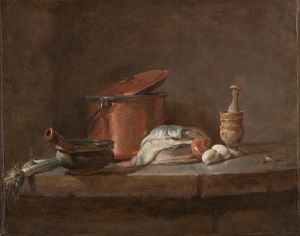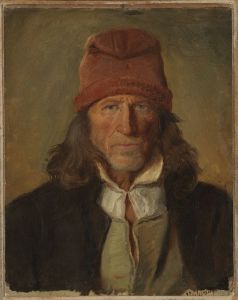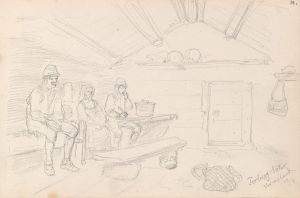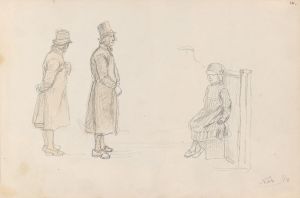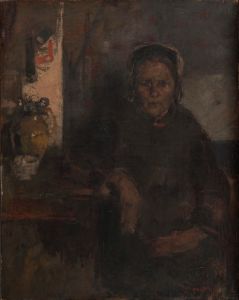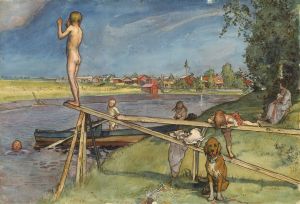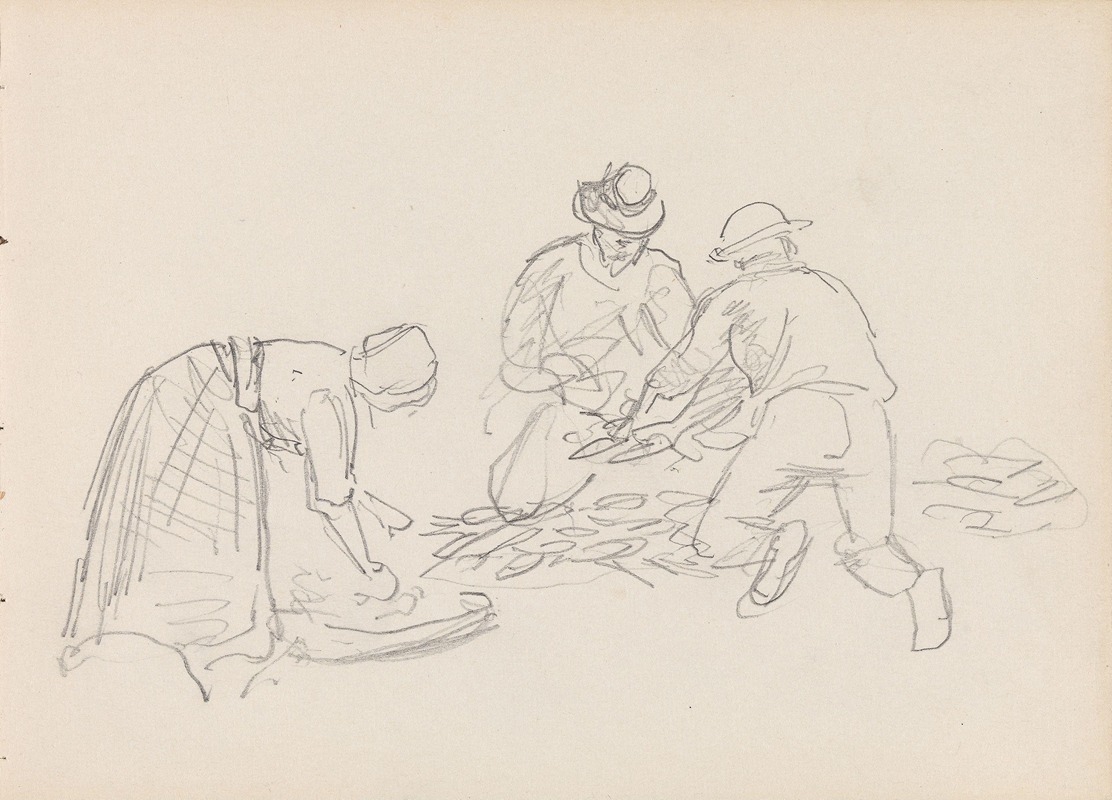
Sløying av fisk
A hand-painted replica of Adolph Tidemand’s masterpiece Sløying av fisk, meticulously crafted by professional artists to capture the true essence of the original. Each piece is created with museum-quality canvas and rare mineral pigments, carefully painted by experienced artists with delicate brushstrokes and rich, layered colors to perfectly recreate the texture of the original artwork. Unlike machine-printed reproductions, this hand-painted version brings the painting to life, infused with the artist’s emotions and skill in every stroke. Whether for personal collection or home decoration, it instantly elevates the artistic atmosphere of any space.
Adolph Tidemand was a prominent Norwegian painter in the 19th century, known for his detailed and realistic depictions of Norwegian rural life and folk culture. One of his works, "Sløying av fisk" (translated to "Fish Gutting"), captures a scene that reflects the everyday life of Norwegian fishermen and their communities. Although specific details about this particular painting are scarce, it can be contextualized within Tidemand's broader oeuvre and the cultural environment of the time.
Adolph Tidemand was born on August 14, 1814, in Mandal, Norway. He studied art in Copenhagen and later at the Academy of Fine Arts in Düsseldorf, Germany, which was a significant center for art education at the time. The Düsseldorf School of Painting, where Tidemand was trained, emphasized detailed realism and often focused on historical and genre scenes. This background influenced Tidemand's approach to painting, leading him to create works that were both realistic and rich in narrative detail.
Tidemand's work is often associated with the National Romantic movement, which sought to capture and celebrate the unique cultural identity of Norway. This movement emerged in response to the country's growing sense of nationalism in the 19th century, as Norway sought to assert its cultural independence from Denmark and Sweden. Artists like Tidemand played a crucial role in this cultural renaissance by documenting traditional Norwegian customs, costumes, and daily activities.
"Sløying av fisk" fits within this context as it portrays a common activity in coastal Norwegian communities—fish gutting. Fishing has been a vital part of Norway's economy and way of life for centuries, and scenes like the one depicted in this painting would have been familiar to many Norwegians. By focusing on such a subject, Tidemand not only showcased the labor and skill involved in fishing but also highlighted the importance of this industry to Norwegian society.
Tidemand's paintings are characterized by their attention to detail and their ability to convey the textures and materials of the subjects he depicted. In "Sløying av fisk," one can imagine the careful rendering of the fish, the tools used by the fishermen, and the expressions on their faces as they go about their work. This level of detail helps to create a vivid and immersive scene that transports the viewer to the world of 19th-century Norwegian fishermen.
While specific information about "Sløying av fisk" is limited, it is likely that the painting, like many of Tidemand's works, was well-received for its authenticity and its contribution to the documentation of Norwegian culture. Tidemand's paintings were popular in his time and continue to be appreciated for their historical and cultural significance.
Adolph Tidemand passed away on August 25, 1876, but his legacy lives on through his art, which remains an important part of Norway's cultural heritage. His works, including "Sløying av fisk," offer valuable insights into the lives of ordinary Norwegians in the 19th century and continue to be studied and admired for their artistic and historical value.





